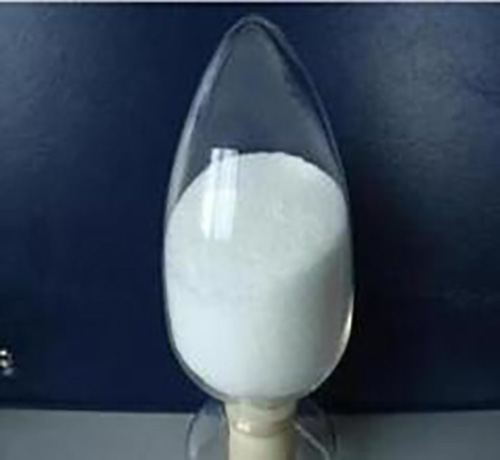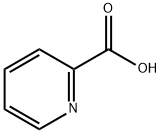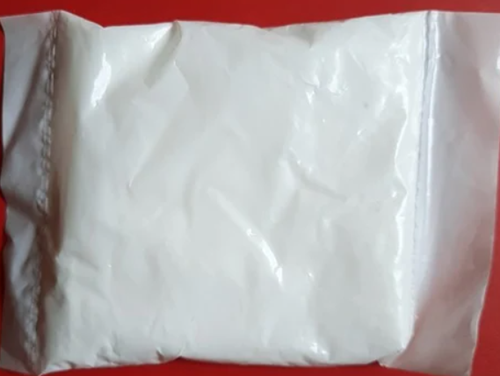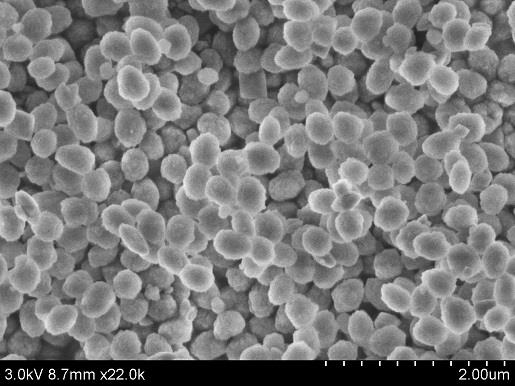The degradation of 2-picolinic acid
Introduction
Pyridine and its derivatives are important representatives of N[1]heterocyclic aromatic compounds. 2-picolinic acid is one of N-heterocyclic aromatic compounds. Due to the instability of 2- aminomuconic 6-semialdehyde and 2-picolinic acid was abiotically formed simultaneously as a deadend product. Many studies have reported that 2-aminomuconic 6-semialdehyde derivatives emerged as metabolites on the partial reductive pathway of nitro aromatic compounds. Picolinic acids arose abiotically from intra molecular condensation of 2-aminomuconic 6-semialdehyde derivatives as deadend products[4].

Picture 1 2-picolinic acid powders
Structure
The UV spectral change indicated that 2-picolinic acid was transformed to a new compound[2]. This new compound was analyzed in parallel by 1 H-NMR and LC–MS. Under a positive mode, a strong signal at m/z 140.1 corresponding to the [M + H]+ adducts was clearly detected, and signal at m/z 162.1 corresponded to the [M + Na]+ . Therefore the molecular weight of this compound was presumed to be 139.1.
Direct decarboxylative arylation
A facile, transition-metal-free, and direct decarboxylative arylation of 2-picolinic acids with simple arenes is described. The oxidative decarboxylative arylation of 2-picolinic acids with arenes proceeds readily via N-chlorocarbene intermediates to afford 2-arylpyridines in satisfactory to good yields under transition-metal-free conditions. This new type of decarboxylative arylation is operationally simple and scalable and exhibits high functional-group tolerance. Various synthetically useful functional groups, such as halogen atoms, methoxycarbonyl, and nitro, remain intact during the decarboxylative arylation of 2-picolinic acids.
The coordination efficiency
Initial screenings of the C–N bond formation between N-Boc[1]hydrazide and aryl iodide were triggered as a function of copper source and picolinic acid ligand derivatives. Control experiment revealed that nearly no conversion of aryl iodide was observed in the absence of ligand. Copper bronze essentially gave no conversion of aryl iodides while CuCl, CuOTf and Cu(MeCN)4ClO4 complexes were not as efficient as the Cu. In addition to the metal sources, we examined the coordination efficiency of the 2-picolinic acid scaffold to the copper metal sphere. Ligand with a substituted methyl group on the 6-position presumably hindered the coordination of the nitrogen atom to the metal center, and hence catalytic efficacy was lowered. Upon placing either a methyl or a methoxy group to the 3-position of the ligand, lower catalytic activities were observed. It is suggested that the 2-picolinic acid could offer a suitable planar N,O coordination, while the a methyl or a methoxy group to the 3-position of the ligand might not provide effective binding templates[2].
Degradation
2-Picolinic acid (2-PA) is an important pyridine derivative, which is widely used in the production of medicine, pesticide, daily chemicals, and feed additives in livestock and poultry industry. Its hydrophilic nature (water solubility of 887 g/L at 20 °C) can do great damage to the environment. Till now several studies have shown that aerobic biodegradation is an effective method to remove 2-picolinic acid from water, in which the microorganisms mainly belong to the genera of Arthrobacter and Streptomyces. Currently, the knowledge gap exists on biodegradation of 2-picolinic acid with new strains. Particularly, information is not available on the kinetics of microbial growth and substrate utilization as well as metabolic pathway with the new strains under different conditions. Obtaining a strain belonging to a different genus and comparing it with previously reported strains are of scientific significance since it will be helpful for researchers to establish a databank on how many kinds of microbes can utilize 2-picolinic acid in nature[4].
In a previous study, we have isolated a nitrobenzene-degrading strain, Streptomyces sp. Z2. It was found that strain Z2 can degrade 2-picolinic acid. This finding is of scientific significance since researches to date have not reported the utilization of 2-picolinic acid by nitrobenzene-degrading strains. Moreover, 2-picolinic acid is one of N-heterocyclic aromatic compounds. At present, the microorganisms which degrade N-heterocyclic aromatic compounds mainly belong to the genera of Arthrobacter and Mycobacterium. So far, researches have not reported on the degradation of 2-picolinic acid by Streptomyces strains. To our knowledge, this is the first report on the degradation of 2- picolinic acid not only by a nitrobenzene-assimilating strain but also by a Streptomyces strain. This paper describes the aerobic degradation of 2-picolinic acid by Streptomyces strain Z2, with an emphasis on the initial oxidative attack of N-heterocyclic aromatic ring[3].
2-Picolinic acid is used in the manufacture of pharmaceuticals, agricultural chemicals, and dyes. Moreover, 2-picolinic acid and 6- hydroxy picolinic acid are donor ligands that can be used to extract metals. Another scientific significance is that the Z2 strain has the potential to be applied to the treatment of wastewater containing 2-picolinic acid or 6-hydroxy picolinic acid.
Reference
1 E.G. Romanowski, et al. A Novel Topical Antiviral Agent, PCL–016 (Picolinic Acid), Inhibits Adenovirus Replication in the Ad5/NZW Rabbit Ocular Model. ARVO Annual Meeting Abstract. May 2005 Volume 46, Issue 13.
2 Lam M S, Lee H W, Chan A S C, et al. Copper (I)-picolinic acid catalyzed N-arylation of hydrazides[J]. Tetrahedron Letters, 2008, 49(43): 6192-6194.
3 Zheng C, Zhou J, Wang J, et al. Aerobic degradation of 2-picolinic acid by a nitrobenzene-assimilating strain: Streptomyces sp. Z2[J]. Bioresource technology, 2009, 100(6): 2082-2084.
4 Zheng C, Wang Q, Ning Y, et al. Isolation of a 2-picolinic acid-assimilating bacterium and its proposed degradation pathway[J]. Bioresource technology, 2017, 245: 681-688.
You may like
Related articles And Qustion
See also
Lastest Price from 2-Picolinic acid manufacturers

US $1.00/kg2025-04-21
- CAS:
- 98-98-6
- Min. Order:
- 1kg
- Purity:
- 99%
- Supply Ability:
- 10 mt

US $0.00/Kg/Drum2025-04-21
- CAS:
- 98-98-6
- Min. Order:
- 1KG
- Purity:
- 99%
- Supply Ability:
- 500mt/year



